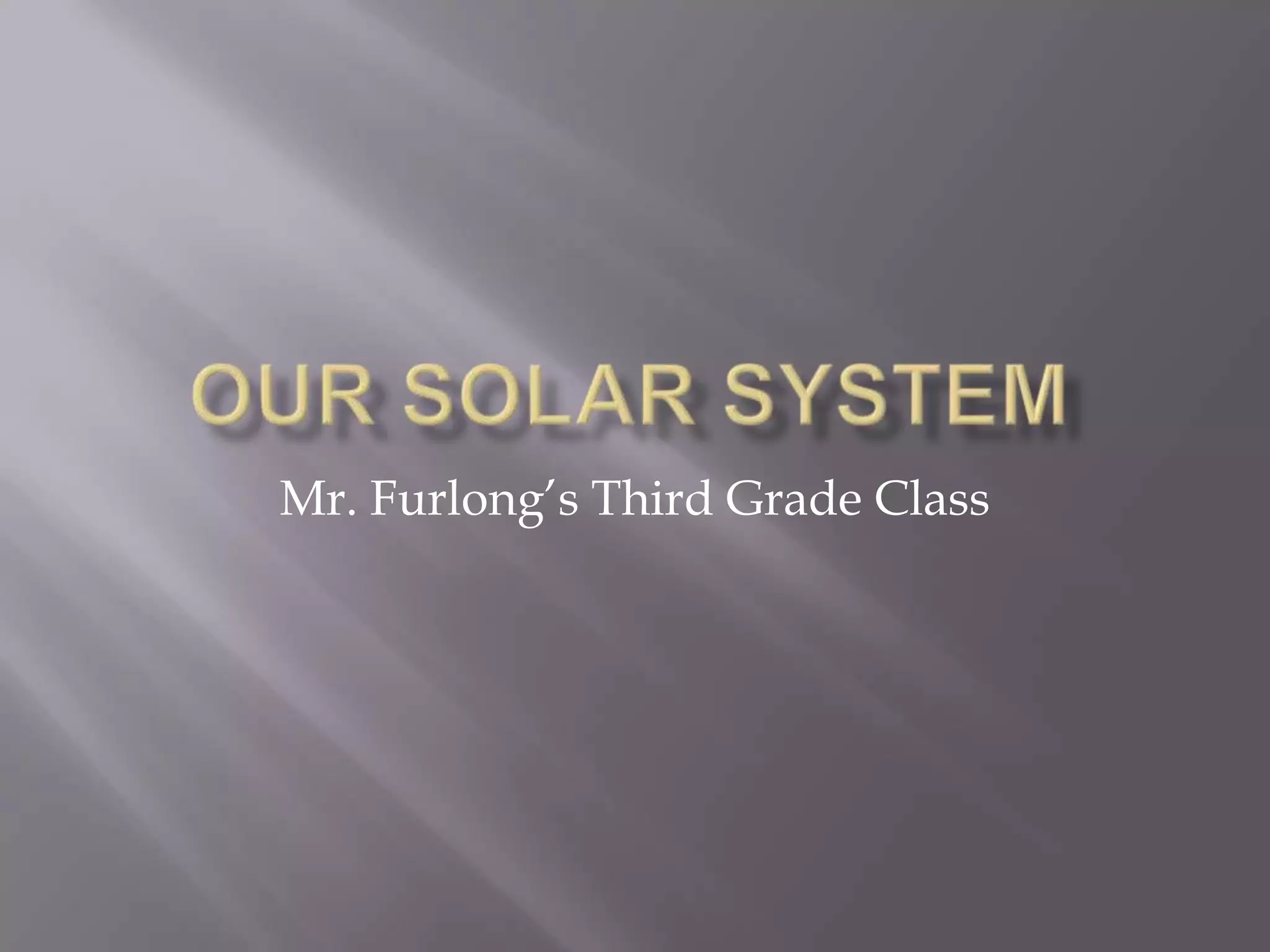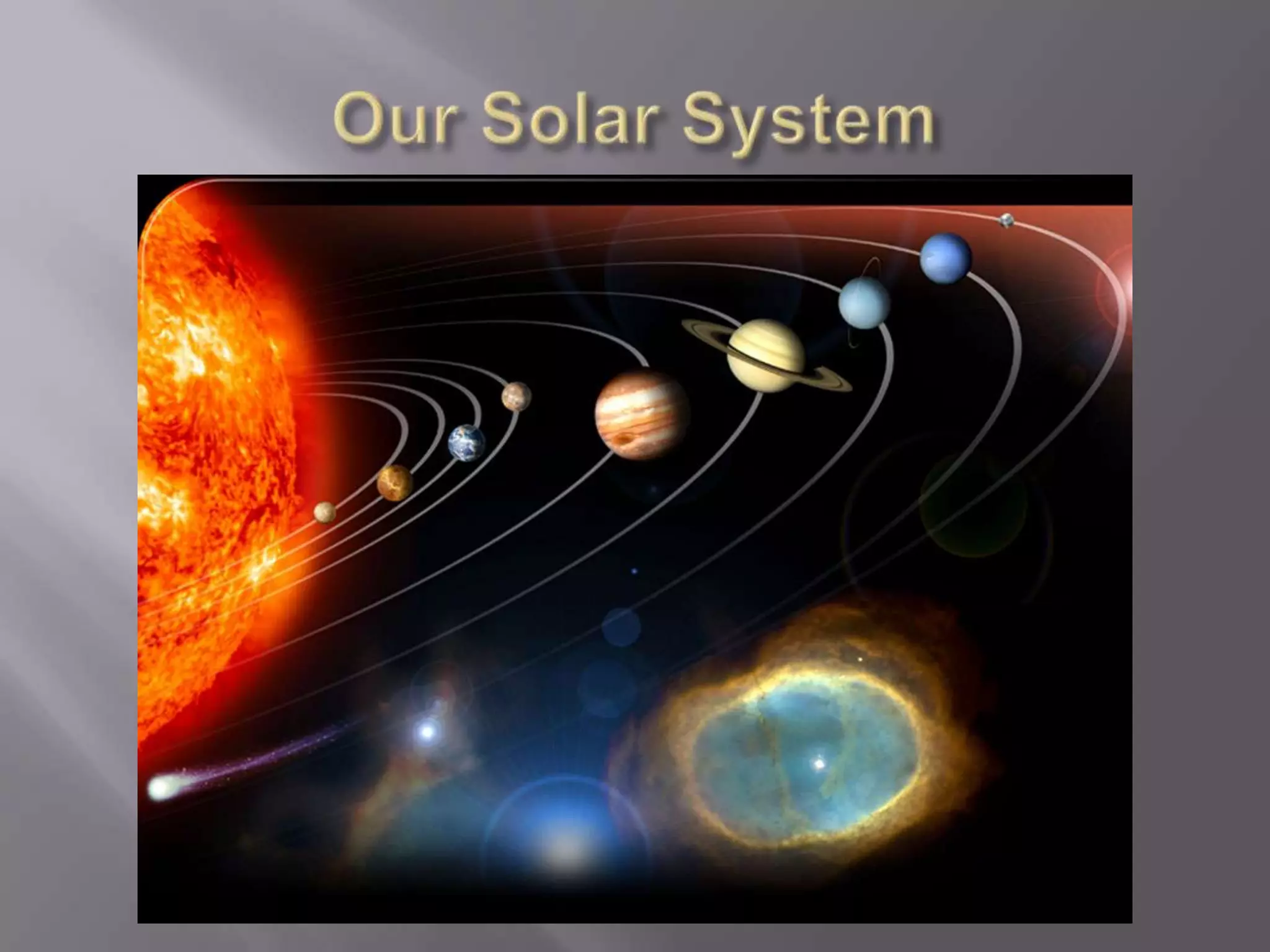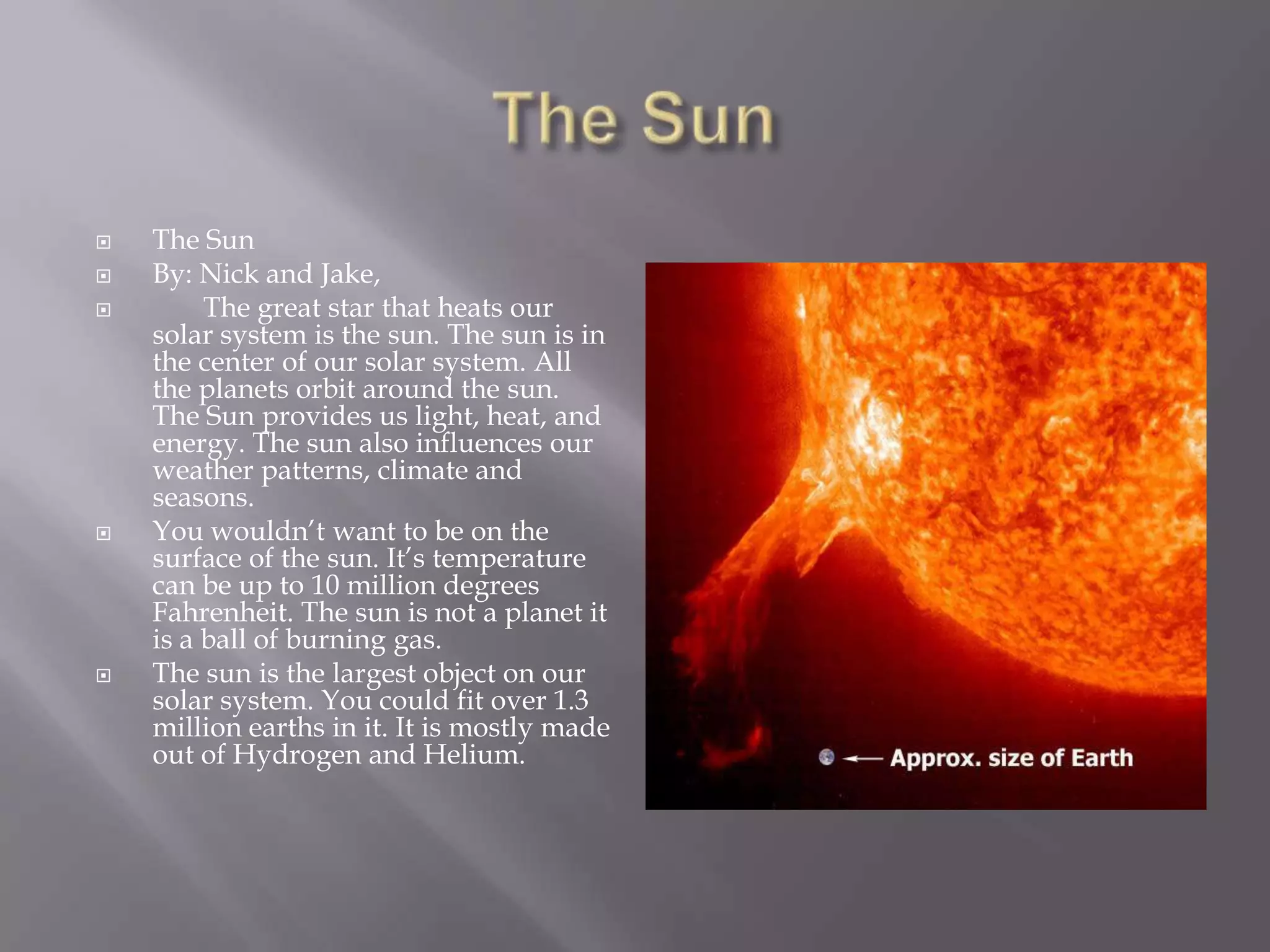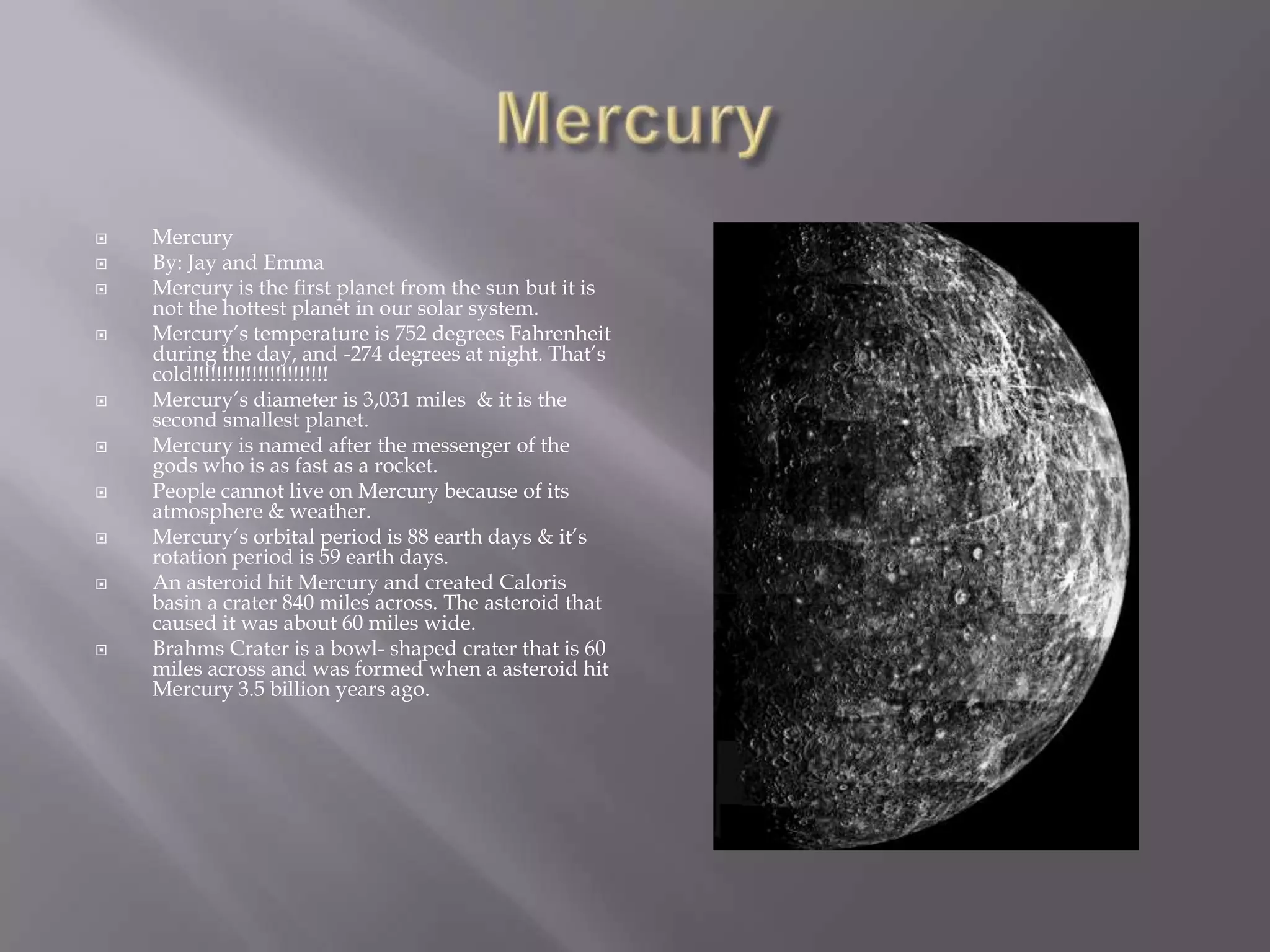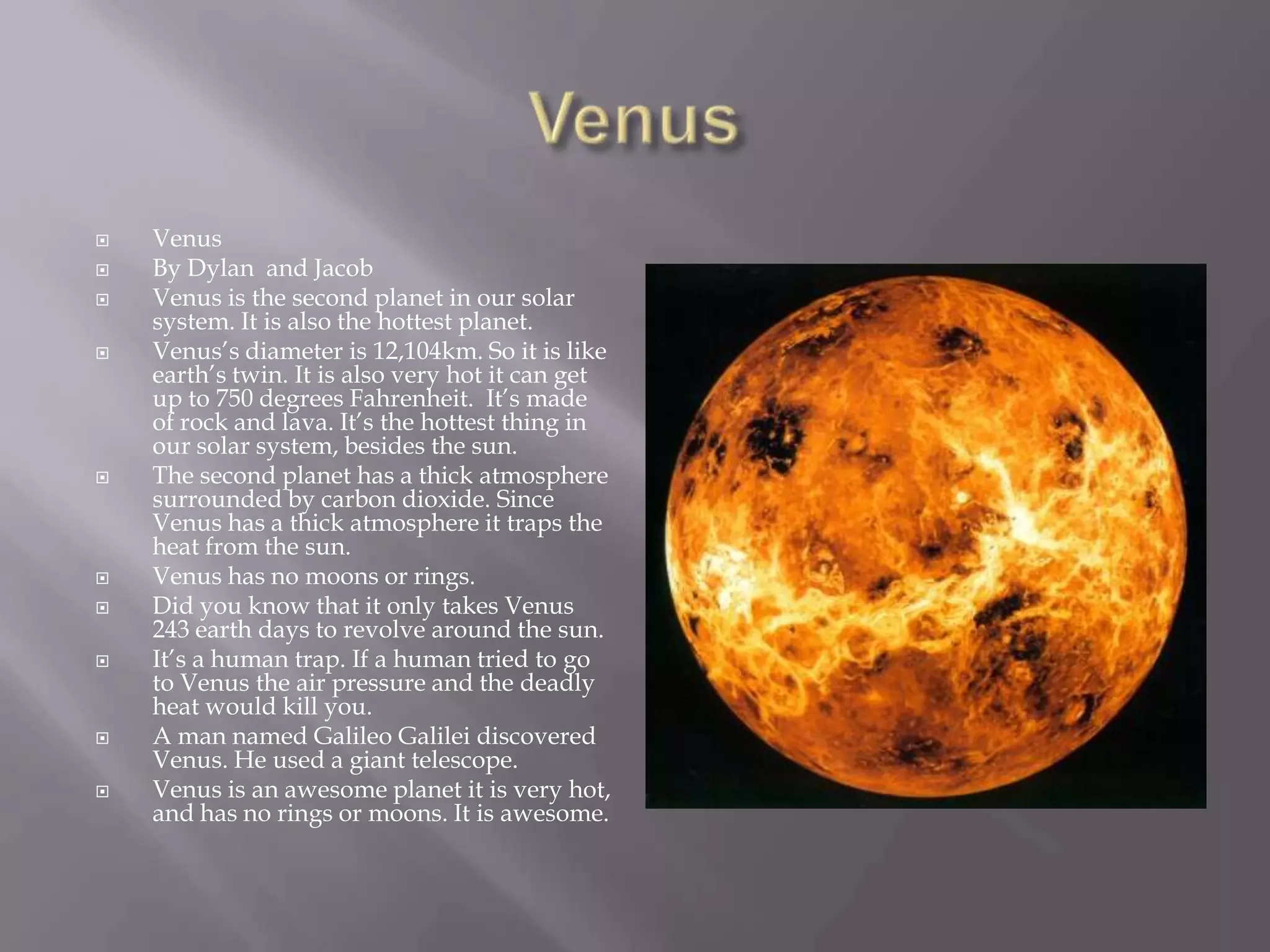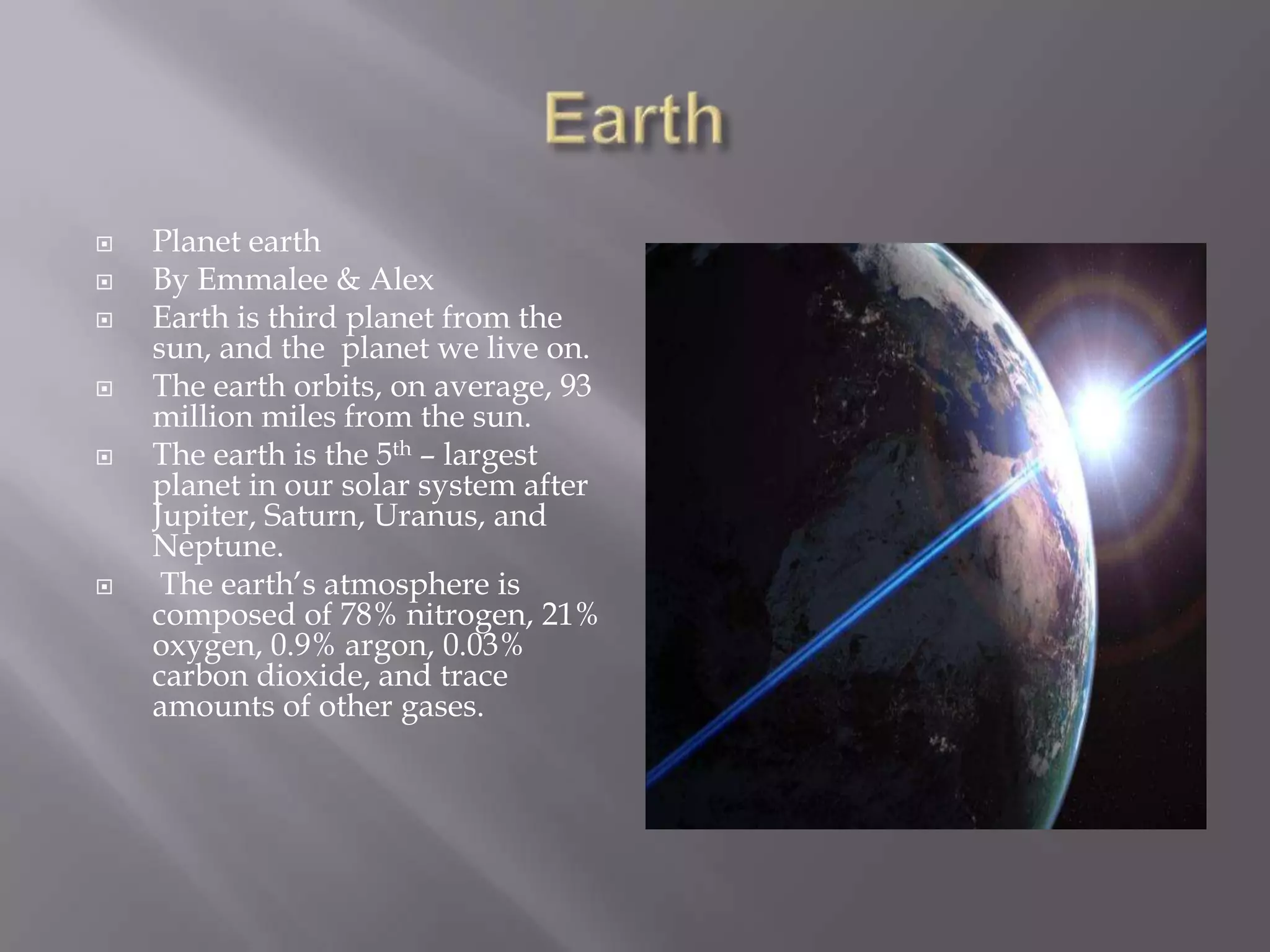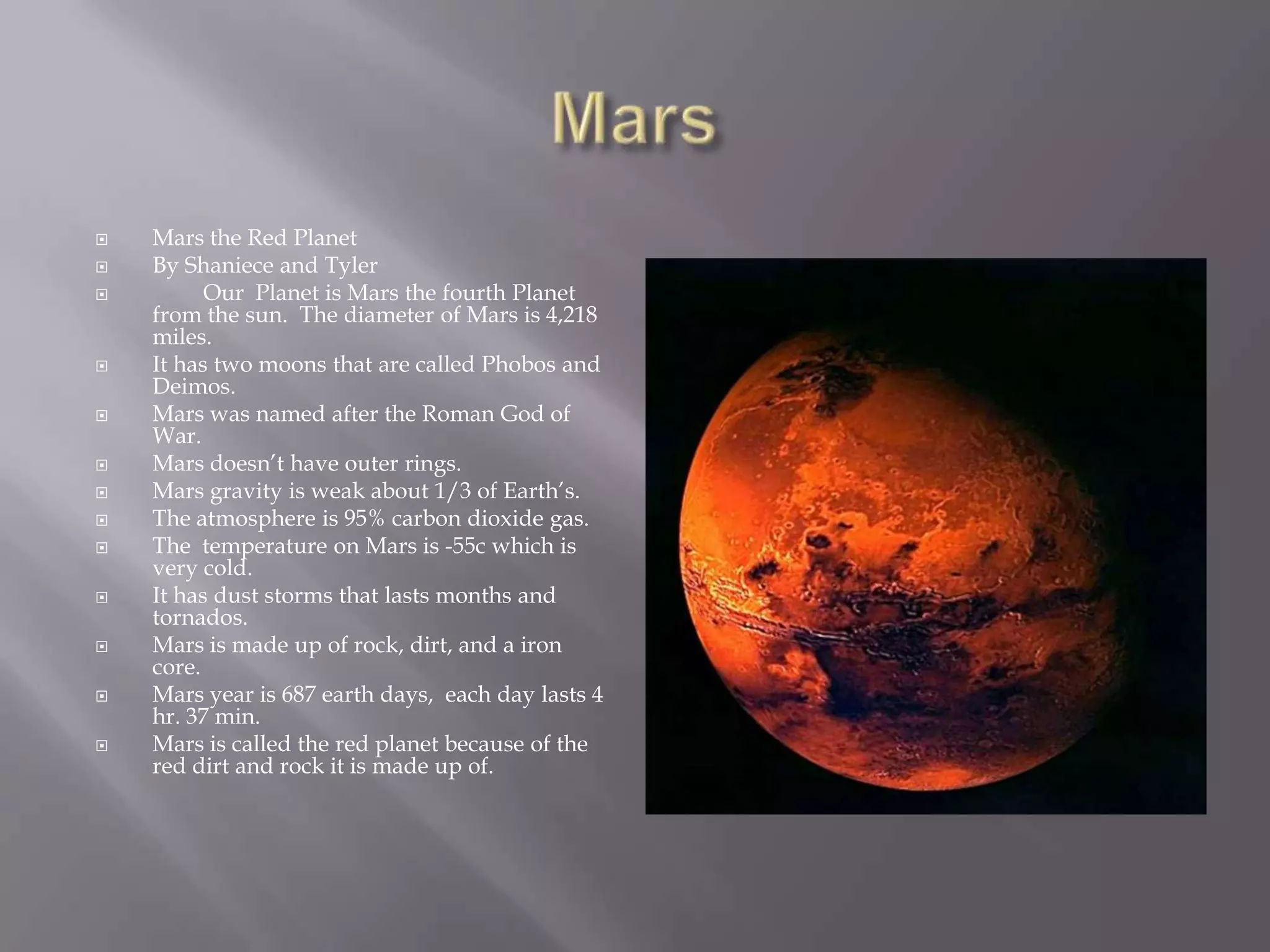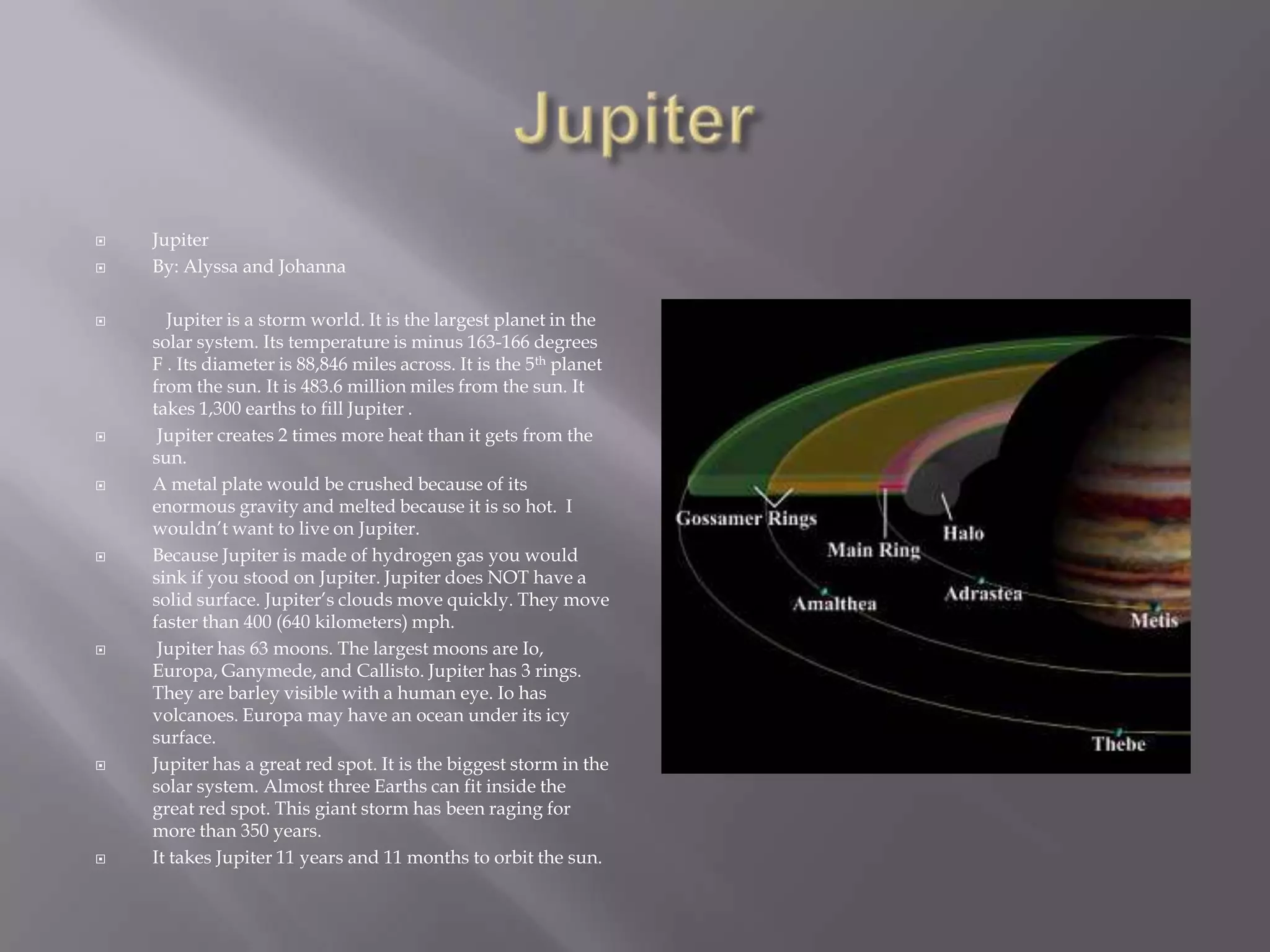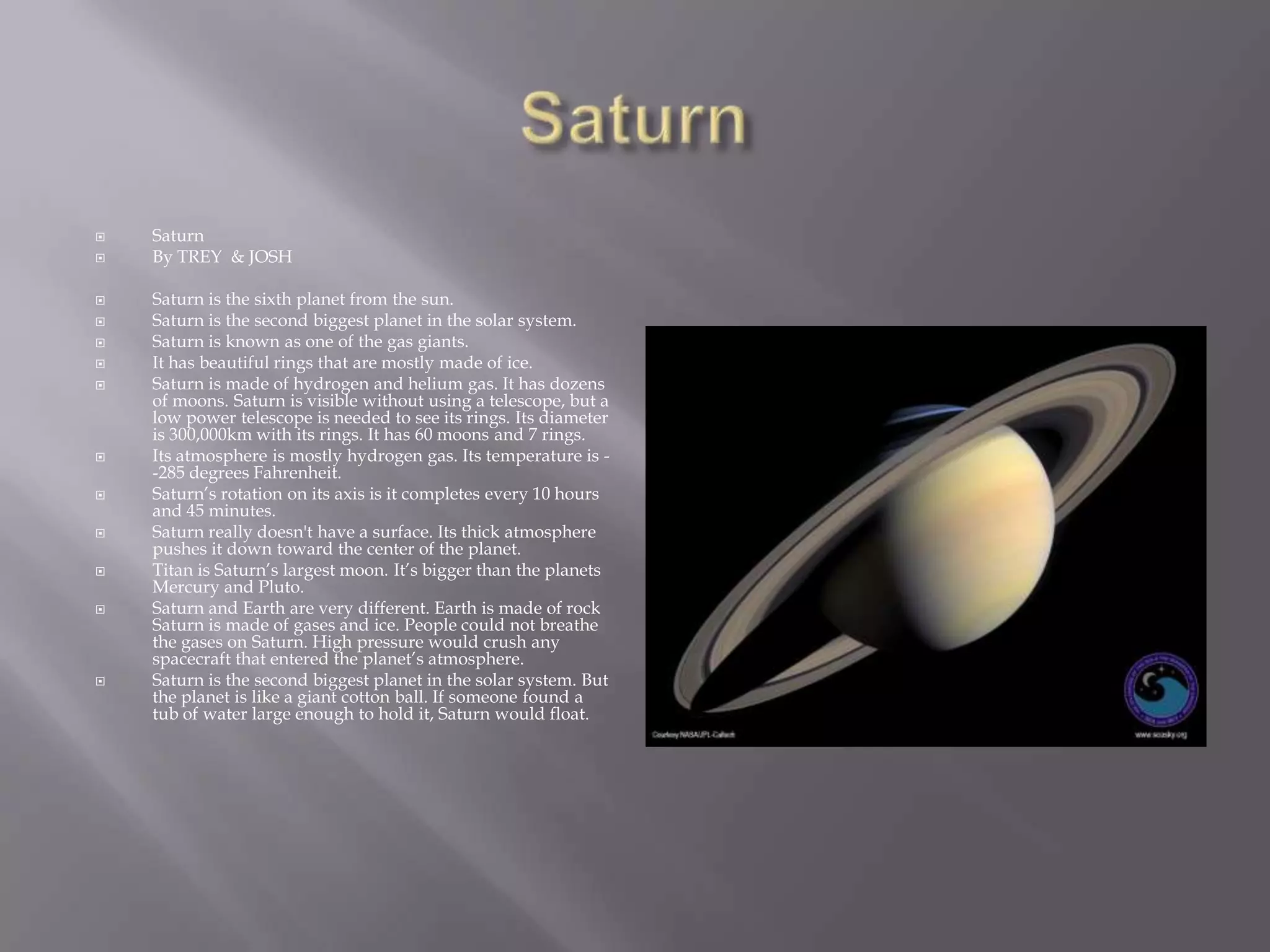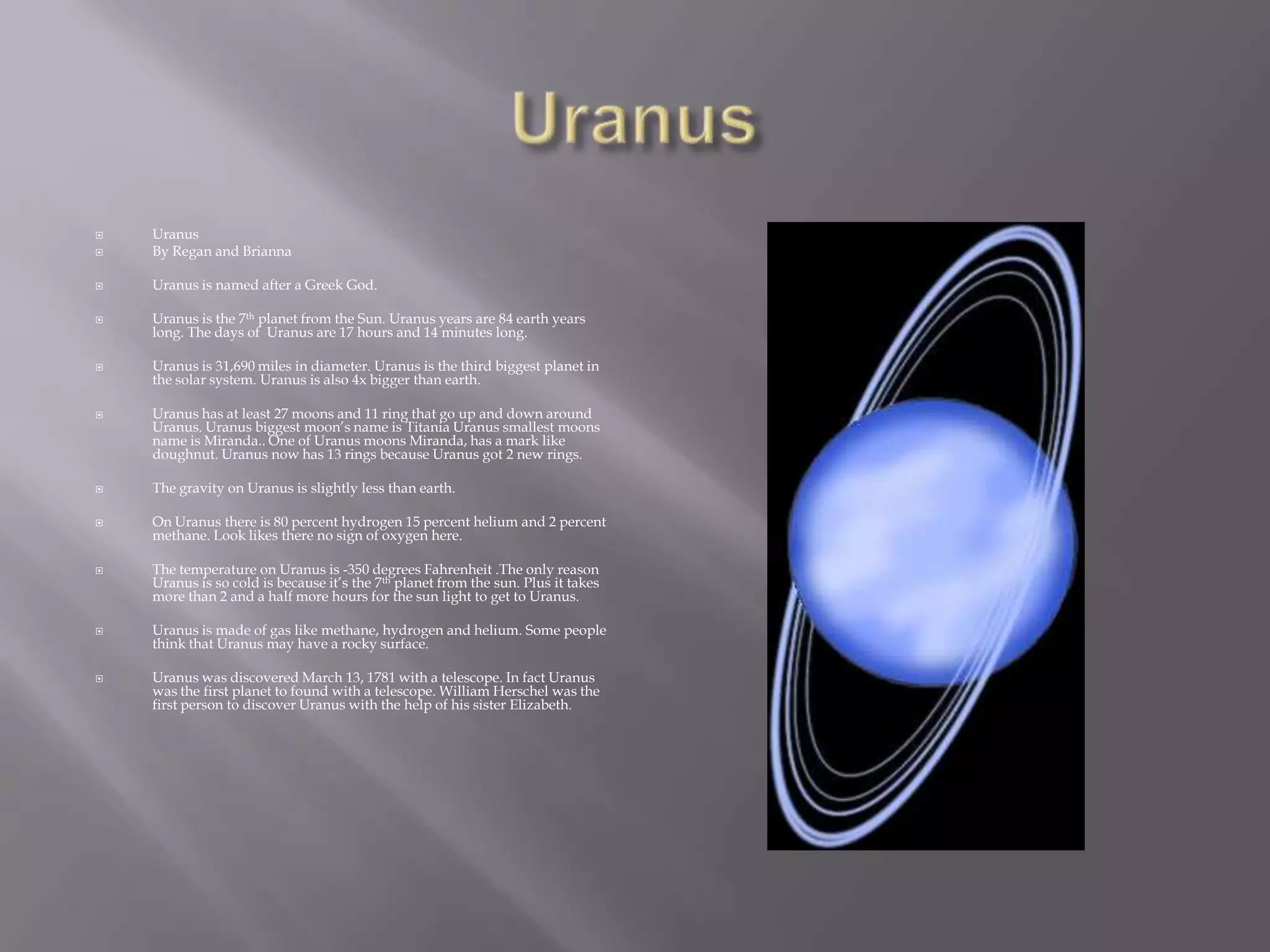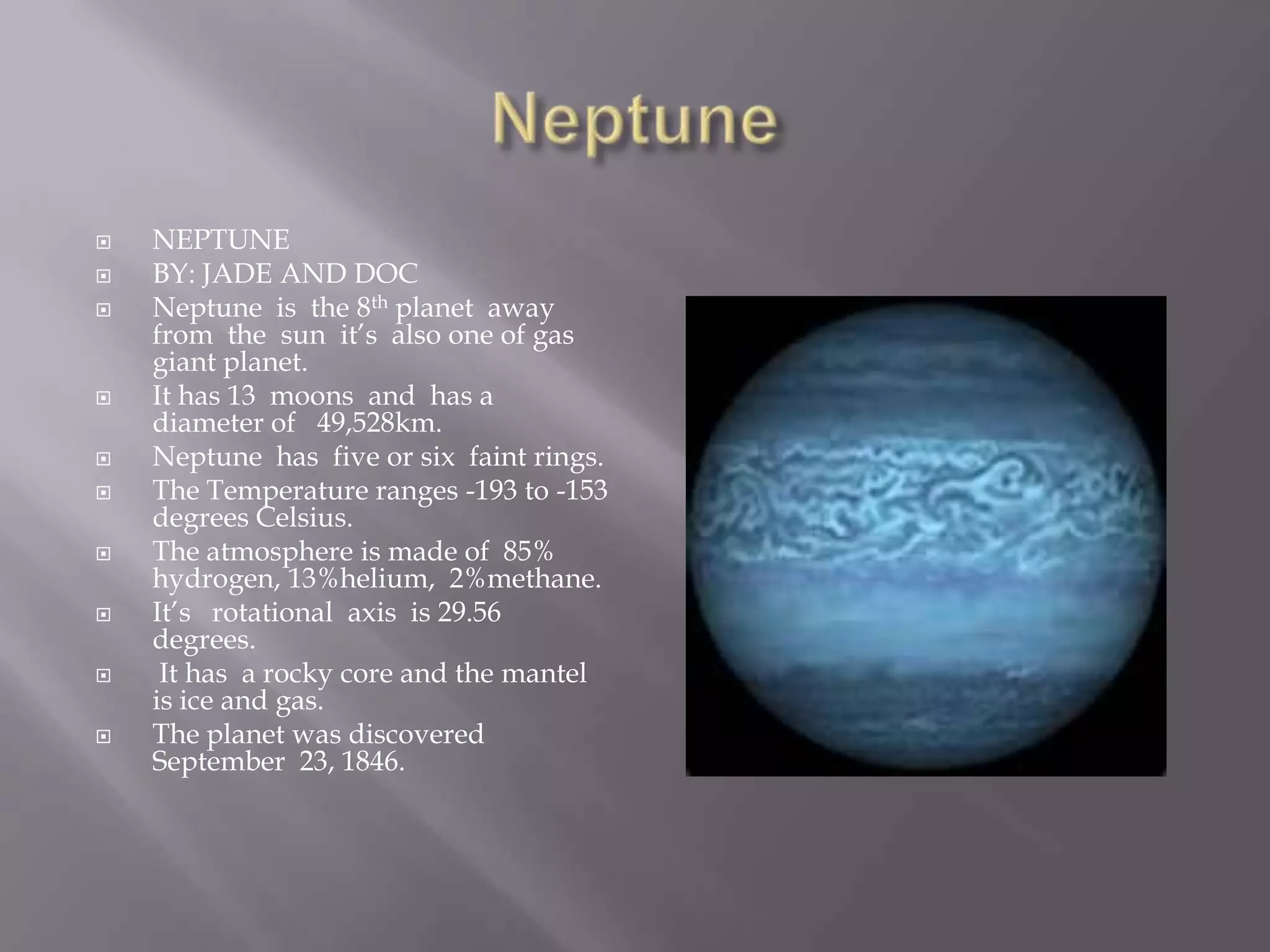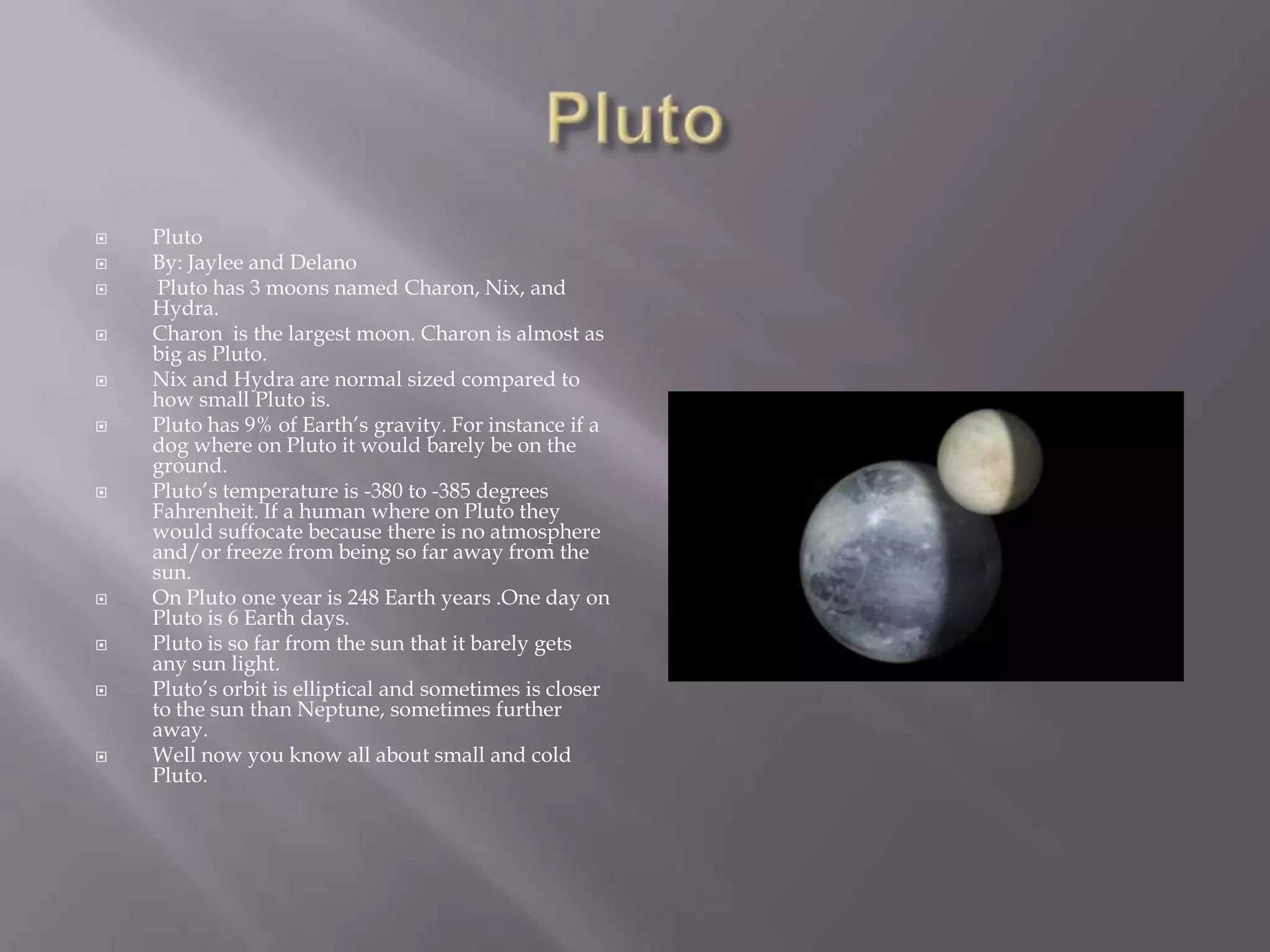The document provides information about the planets and other objects in our solar system as summarized by Mr. Furlong's third grade class. It includes 3 sentences on the Sun, comets, asteroids and meteors. Individual sections then summarize details about each planet - Mercury, Venus, Earth, Mars, Jupiter, Saturn, Uranus, and Neptune - and other objects like Pluto, including their size, composition, conditions, and interesting facts.
